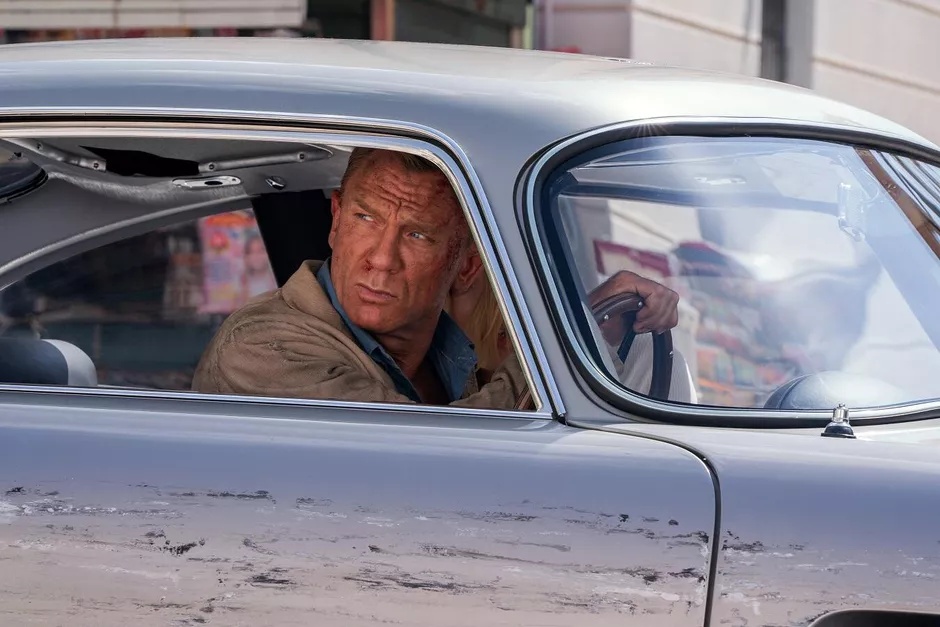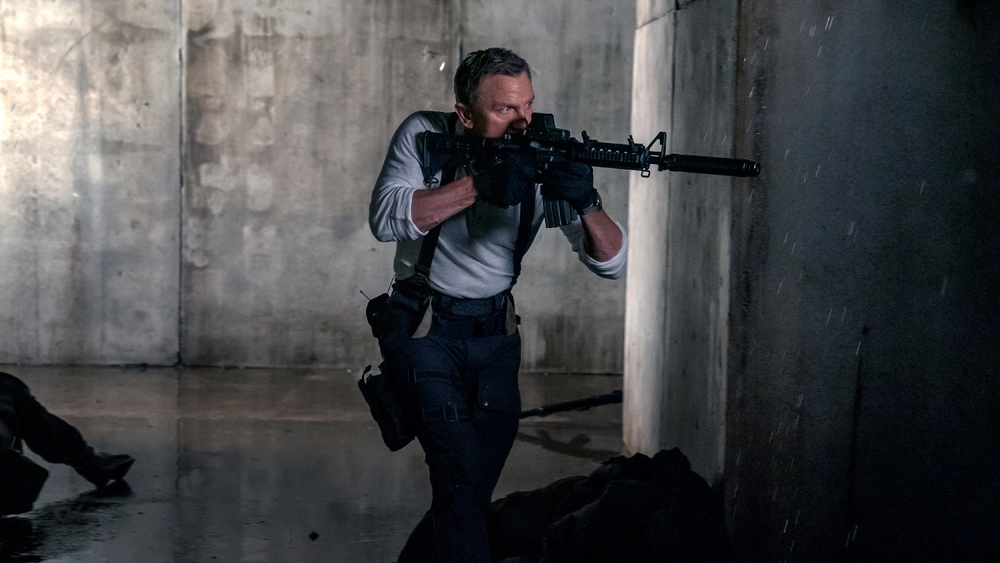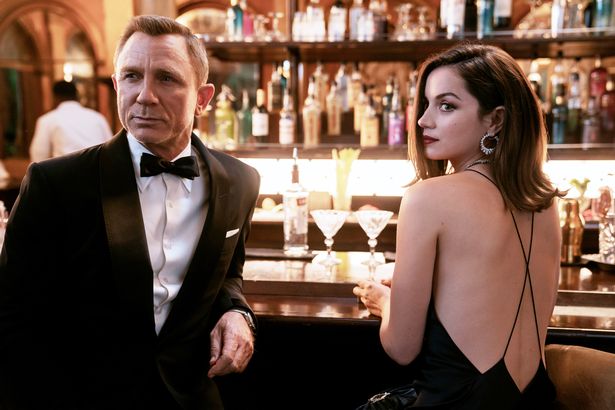No Time To Die caps off Daniel Craig’s 15 year-run as James Bond with a mixed bag of a final installment that is equal parts a triumphant send-off and an exposure of all the missed opportunities this iteration faced. Daniel Craig shines as Bond in his most emotional performance as the character and cements his legacy as the most nuanced interpretation of 007. Cary Fukunaga makes some impressive choices as a director that elevate a few of the typical Bond cliches to new heights. Unfortunately, many other aspects of the movie aren’t on the same execution level as the star and director and it really shows.
The Good:
This is easily Craig’s best performance as Bond. Since Casino Royale, he has brought such gravitas to the role while still showing cracks of humanity throughout his 5 film run. In No Time To Die, Craig must wear his emotions on his sleeve while still being the blunt instrument that M promoted in 2006. Bond deals with a betrayal, severe trust issues, and the realization he will never escape the life of a 00 agent and this is all before the title sequence begins. Many fans and critics felt that Spectre (2015) was the least fun Bond movie in decades and Craig nearly confirmed this when he said he would rather slit his wrists than play the character again after filming of Spectre wrapped. It appears that the absence of fun was quickly rectified as Craig has much more swagger in the action scenes and gets to throw out some classic style Bond lines that will have the audience smiling.
Director Cary Fukunaga injects some intensity into the movie with a thrilling home invasion flashback to start the movie. The way Fukunaga uses the lighting and windowpanes as a masked man stalks a young girl is unnerving and evidence of a director with a great eye for what will thrill audiences. In another standout action sequence Bond is on foot in a foggy forest being pursued by assassins on dirtbikes and in jeeps. The use of the fog, sound, and muzzle flashes make this one of the Craig run’s most unique setpieces. Finally, taking a page from his True Detective “one-shot” from season 1, Fukunaga’s camera follows Bond up 5 flights of stairs as he shoots and fights his way to the top through countless assassins. If there was an edit in this sequence it was hidden so well that Fukunaga should just do a “one-shot” in all of the projects going forward as they are so impressive and immerse the audience in the conflict.
The Bad:
The runtime. This movie is long and it feels long. So many side plots that could have been removed and not neutered the movie’s arc in any way weigh the movie down. The movie is nearly 3 hours long and to give a sense of how disjointed it is in this runtime, the main villain of the film is seen for 5 minutes at the beginning of the movie and not glimpsed again for almost 90 minutes. More on the villain in “The Bad” section of this review.
Also bad are the missed opportunities for the supporting cast. It is understandable that Craig deserves the spotlight on the final performance as Bond but previous Bonds were never hurt by having a worthwhile plot point involving M, Q, or Moneypenny. In No Time To Die all of these characters are pushed to the side and after one (maybe two) short scenes with Bond are stuck looking at computer screens or talking to Bond on the phone. Even the new 007 played by Lashna Lynch is introduced as a very capable and interesting new 00 agent but after two quick encounters with Bond who has been retired for five years, she backs off of the playful banter and simply falls in line with all of his ideas. Of course, the hero can end up being right but there was an interesting dynamic there that wasn’t explored enough to have been used in the movie at all.
Jeffrey Wright and Ana De Armas both show up for a mission in Cuba that delivered a very entertaining setpiece in No Time To Die. While the Cuba mission served the overall plot of No Time To Die one can’t help but laugh when Ana De Armas almost looks at the camera when the mission ends to say “Bye James!” Jeffrey Wright is given even less to do beyond chew on a cigar and convince James to get in on the Cuba mission to unravel a needlessly complicated conspiracy.
This leads me to the needlessly complicated global contagion conspiracy. Bond movies have a knack for ridiculous plots because at the core we just want to see James Bond save the World. In No Time To Die the script does so many backflips and twists to link Bond’s love interest from Spectre, Madeleine, to Blofeld (Christoph Waltz) to Rami Malek’s Safin to the death of her mother as a girl all to come back around and link to James Bond’s entire journey that started in Casino Royale that it would make a viewer get motion sickness. There is a chance you failed to follow the last sentence so let me try this way and add more complications. M (Ralph Fiennes) had a secret bioweapon that targets specific DNA that Bond knew about and thought was shut down. Turns out M kept it open. A scientist was kidnapped by Spectre on the orders of Blofeld to use the DNA tech to kill James Bond. However, Safin infiltrated Spectre and flipped the scientist to target Spectre so that he could reunite with Madeleine who he knew as a child, and sell the DNA weapon to terrorists. The plot was just a Russian nesting doll of dumb. Despite that, it still allowed for some great action and moments from Craig.
| This image has been resized. Click this bar to view the full image. The original image is sized 1200x667px. |


The Ugly:
Rami Malek’s Safin is the worst Bond villain in recent memory. First of all, he is virtually non-existent for 90% of the runtime and when he is present his conflict with Bond is so forced that it strains the credibility of a series that has had some of the most outlandish villains ever put on screen. Safin’s goals are never remotely fleshed out. His hatred of Bond is never fully justified. Even his relationship with Madeleine is groan-inducing (not to mention timeline-wise makes no sense) that it may hurt your brain trying to figure it out. Safin adds absolutely nothing to the movie. In fact, his character could have been cut altogether and the movie would have barely suffered.
If the writers and creators wanted to send Bond off then it makes no sense that they wouldn’t rehab Christoph Waltz’s Blofeld from Spectre. Blofeld was disappointing and captured in Spectre but No Time To Die shows that his influence and abilities still existed while in jail. They could have had Bond face off against a classic Bond villain for Craig’s final entry but chose to have someone as boring as Safin just exist.
| This image has been resized. Click this bar to view the full image. The original image is sized 940x627px. |


Conclusion:
No Time To Die did what it had to be in the sense that it is a fitting send-off for Daniel Craig as James Bond. Craig completely elevates this movie and puts on his best showing as the character and one of the best Bond performances ever. It is a shame that the length, lack of focus, and structure really prevent this movie from becoming one of the best Bond movies ever. However, there is enough Bond here to entertain audiences and enough grounded action to give all a break from the CGI superhero fights for a few weeks that is more than a welcomed change for this reviewer. Go see Bond in the theater and completely shut off your brain for 3 hours. If you think about it too hard it will just ruin the experience.








